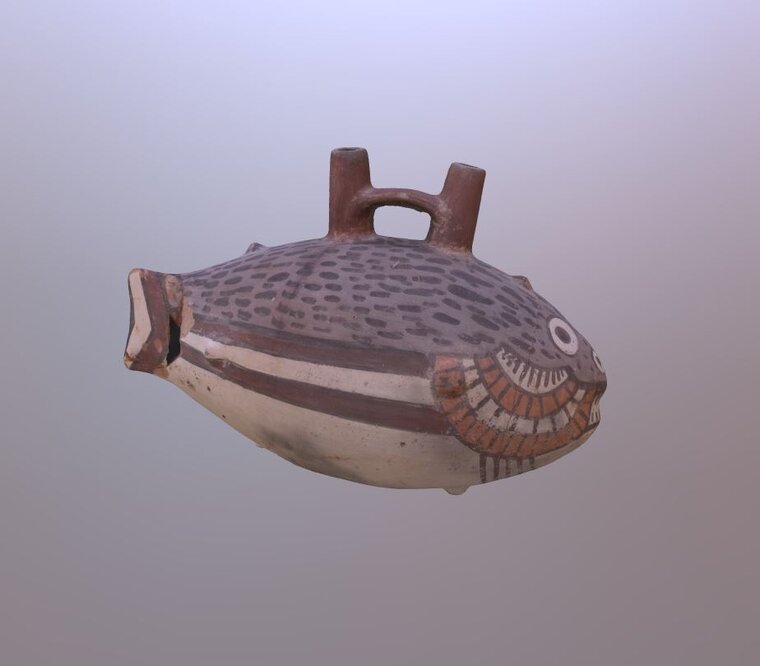
Nasca fish vessel
, 100 BC
The Nazca, a culture in Peru from around 100 BC to 700 AD, were known for their exquisite pottery in multi-colored glazes, often times depicting animals. The giant geoglyphs, the famous Nazca-lines that can only be seen from airplanes, are also part of this society.
Another one of their achievements were elaborate aquaeducts that brought fertility to this otherwise totally arid region.




